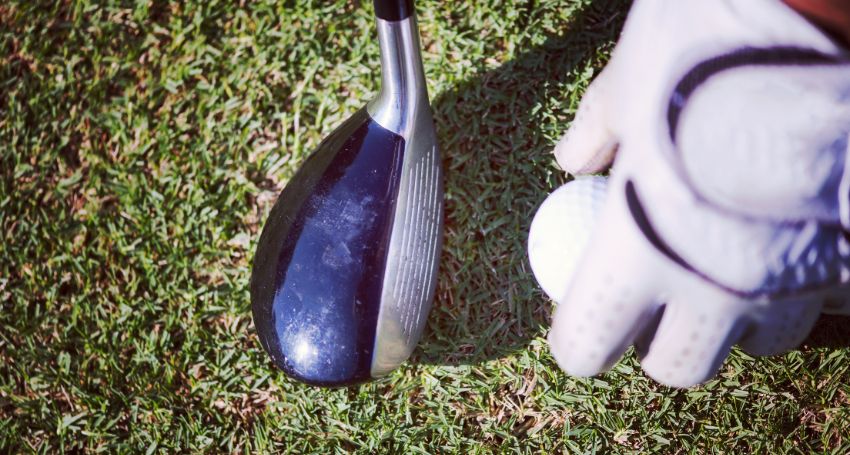Are you struggling with how to hit a hybrid golf club effectively? You’re not alone. Many golfers find hybrids challenging, but with the right fitting and adjustments, you can turn your hybrid into your favourite club. This blog will guide you through the fitting process and how it can enhance your performance on the course.
Introduction to Hybrids
Hybrids have become a popular choice among golfers looking for versatility and ease of use. These clubs combine the best features of both irons and woods, providing golfers with a unique tool to tackle various course conditions. Understanding how to hit a hybrid golf club effectively can significantly improve your game. Whether you’re facing a long par 3, navigating through thick rough, or attempting a tricky approach shot, hybrids can be your go-to solution.
Why Choose a Hybrid?
Hybrids are designed to offer more forgiveness on off-centre hits compared to traditional long irons. Their wider clubface and lower centre of gravity help in launching the ball higher with less effort. Additionally, hybrids often come with adjustable features that allow players to customize their loft and lie angles, providing further adaptability to individual playing styles.
Common Misconceptions
- Hybrids are only for beginners: While hybrids are great for novice golfers, they are equally beneficial for beginner players looking to enhance their performance.
- Hybrids can’t replace long irons: Many players find that hybrids can outperform long irons in terms of distance and accuracy, making them a valuable addition to any bag.
- Hybrids are difficult to hit: With proper fitting and practice, hybrids can be among the easiest clubs to hit, allowing for better contact and improved results.
Understanding Your Hybrid Struggles
Many golfers experience frustration when it comes to hitting their hybrids. Common issues include inconsistent ball flight, lack of distance, and difficulty in achieving the desired trajectory. It’s essential to understand the root causes of these struggles to address them effectively.
Common Hybrid Struggles
- Inconsistent Ball Flight: This can result from improper shaft flex or weight distribution, leading to a lack of control over the ball’s direction.
- Low Trajectory: A common complaint is that hybrids fail to get the ball airborne, often due to incorrect loft settings or an unsuitable golf shaft.
- Too Much Spin: Excessive backspin can hinder distance, making it crucial to find the right balance between loft and shaft characteristics.
The Importance of Club Fitting
When it comes to optimizing your hybrid performance, club fitting is paramount. A well-fitted hybrid can transform your game, allowing you to harness the club’s full potential. Understanding how to hit a hybrid golf club starts with ensuring that it fits your unique swing characteristics.
What is Club Fitting?
Club fitting is the process of customizing golf clubs to match a player’s swing mechanics. This can include adjustments to club length, shaft flex, grip size, and loft settings. By undergoing a proper fitting, golfers can improve their accuracy, distance, and overall enjoyment of the game.
Benefits of Club Fitting
- Enhanced Performance: A fitted hybrid can lead to better ball flight, increased distance, and improved accuracy.
- Reduced Injury Risk: Properly fitted clubs can help prevent swing-related injuries by promoting better mechanics.
- Increased Confidence: Knowing that your equipment is tailored to your needs can boost your confidence on the course.
Baseline Review: Analyzing Performance
Before making any adjustments, it’s crucial to analyze your current hybrid performance. This involves taking a close look at your swing data, including ball speed, launch angle, and dispersion patterns. A comprehensive baseline review will help identify your specific needs and areas for improvement.
Key Metrics to Analyze
- Ball Speed: This metric indicates how fast the ball leaves the clubface. Higher ball speed generally results in greater distance.
- Launch Angle: The angle at which the ball leaves the club is critical for achieving optimal height and distance.
- Spin Rate: Understanding your spin rate will help determine how much control you have over your shots, especially on approach.
Common Equipment Issues
Once you’ve established a baseline, the next step is to identify any key issues affecting your hybrid performance. This could involve examining your equipment, swing mechanics, or both.
- Improper Loft: If the loft is too low, you may struggle to get the ball airborne. Conversely, too much loft can lead to excessive spin.
- Incorrect Shaft Flex: A shaft that is too stiff or too flexible can affect timing and distance, resulting in inconsistent shots.
- Outdated Technology: Many golfers are still using older hybrid models that lack the advancements in design and materials found in newer options.
Choosing the Right Hybrid Head
The hybrid head you choose can significantly impact your performance. Different heads offer varying degrees of forgiveness, adjustability, and aesthetic appeal. Understanding how to hit a hybrid golf club effectively starts with selecting the right head for your game.
Factors to Consider
- Loft Options: Select a head with adjustable loft settings to fine-tune your launch angle.
- Weight Distribution: Look for heads with a low centre of gravity for better launch and forgiveness on mis-hits.
- Face Design: A hot face can enhance ball speed, while a larger sweet spot can help on off-centre hits.
Selecting the Right Shaft
The shaft is just as crucial as the hybrid head when it comes to optimizing your performance. The right shaft can improve your timing and enhance your overall swing mechanics.
Key Considerations for Shaft Selection
- Flex: Choose a shaft flex that complements your swing speed. A regular flex may benefit slower swingers, while stiffer options are better for faster swings.
- Weight: Heavier shafts can provide more control, while lighter shafts may help with swing speed.
- Material: Graphite shafts are generally lighter and provide more feel, while steel shafts offer more consistency and durability.
Comparing Hybrid Options
When it comes to selecting the right hybrid, you have a wealth of options at your disposal. Each hybrid model offers unique features that can cater to different playing styles and preferences. Understanding how to hit a hybrid golf club effectively starts with comparing these options
Verifying Improvement
Once you’ve made adjustments to your hybrid setup, it’s essential to verify the improvements. This phase ensures that the changes made during the fitting process are genuinely benefiting your game.
Key Metrics to Review
- Ball Speed: Monitor ball speed to see if there’s been an increase. This is a direct indicator of how well your new hybrid is performing.
- Launch Angle: Check if your launch angle has improved. A higher launch angle often translates to better distance and softer landings.
- Dispersion Patterns: Analyze your shot dispersion. A tighter dispersion indicates better control and consistency.
After making adjustments, hit a series of shots and compare the results to your baseline data. This will help you determine if the changes have produced the desired effects.
Making Adjustments for Better Results
Even after the fitting process, you may find that further adjustments are necessary to maximize your hybrid’s performance. Here are some strategies to consider:
Experiment with Different Settings
If your hybrid allows for adjustability, don’t hesitate to experiment with different loft and lie settings. Small tweaks can lead to significant improvements in ball flight and distance.
Consider Shaft Changes
If you’re still not seeing the results you want, exploring different shafts can be beneficial. The flex, weight, and material of the shaft can all impact your swing dynamics. Sometimes, even just switching from graphite to steel can make a noticeable difference.
Seek Professional Guidance
Working with a professional club fitter can provide insights that you might not achieve on your own. They can assess your swings and provide recommendations tailored to your needs, ensuring that you’re using the best equipment for your game.
Conclusion
Finding the perfect hybrid can dramatically improve your performance on the course. By understanding the importance of fitting, comparing different options, and verifying your improvements, you’ll be well on your way to mastering how to hit a hybrid golf club.
Remember, it’s not just about having the right equipment; it’s about ensuring that it’s tailored to your unique playing style. So, don’t hesitate to consult with a professional fitter and take the time to find what works best for you.
FAQ’s
What is hybrid fitting?
Hybrid fitting is the process of customizing a hybrid golf club to match a player’s swing characteristics. This includes adjustments to the club head, shaft, and other specifications.
How do I know if I need a hybrid fitting?
If you struggle with consistency, distance, or accuracy when hitting your hybrid, it may be time for a fitting. Additionally, if you’ve recently changed your swing or equipment, a fitting can help optimize your setup.
Can a hybrid replace my long irons?
Yes, many golfers find that hybrids can outperform long irons in terms of distance and accuracy. They offer a higher launch and more forgiveness on off-centre hits.
How often should I get fitted for hybrids?
It’s advisable to get fitted whenever you make significant changes to your swing or if you notice a drop in performance. Regular fittings can help ensure your equipment remains optimal for your game.
What should I expect during a hybrid fitting session?
During a fitting, expect to analyze your current performance metrics, test various hybrid models, and make adjustments based on your swing data. A professional fitter will guide you through the entire process.
By addressing these common questions, we hope to provide clarity on hybrid fitting and encourage you to take the necessary steps to enhance your game.





























































